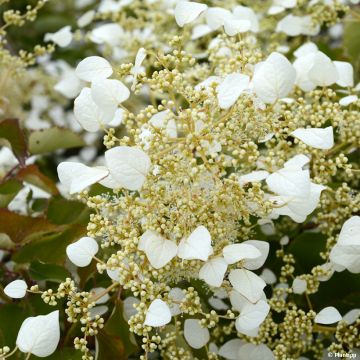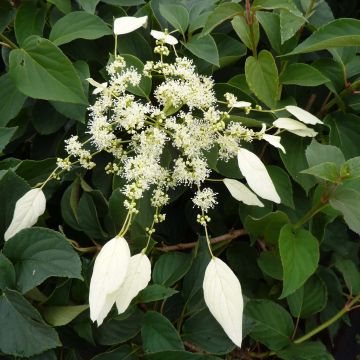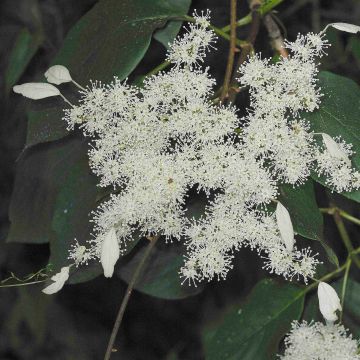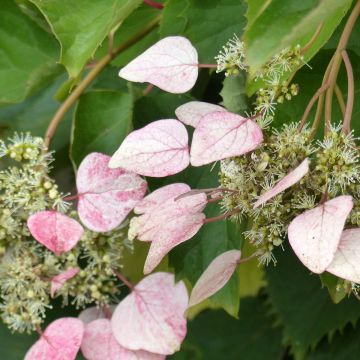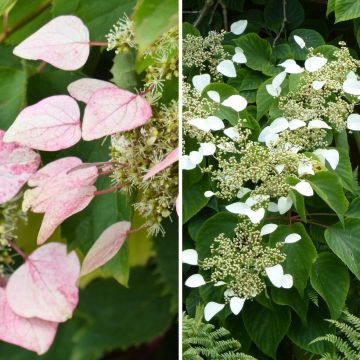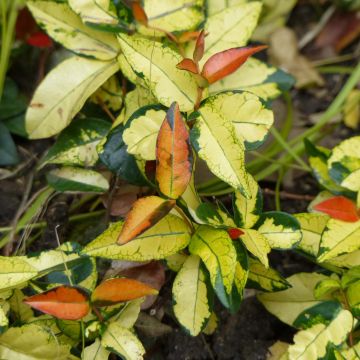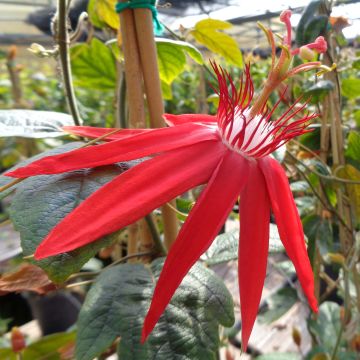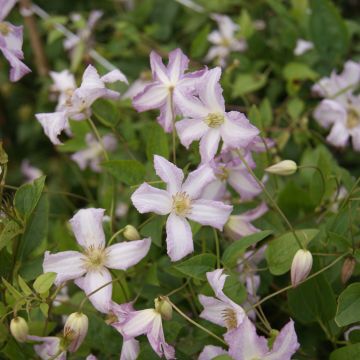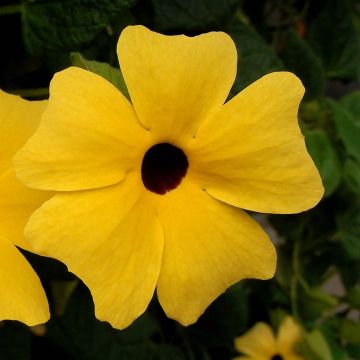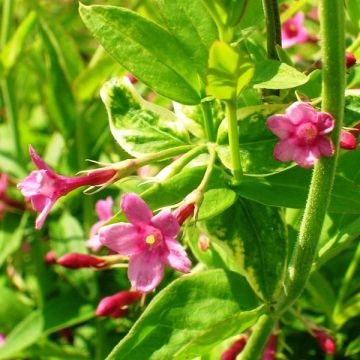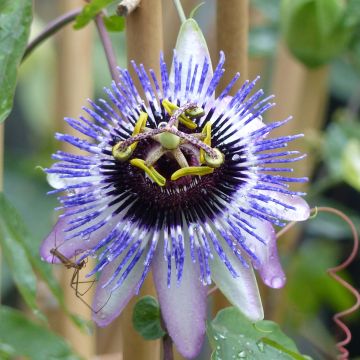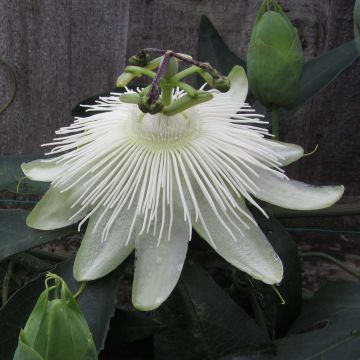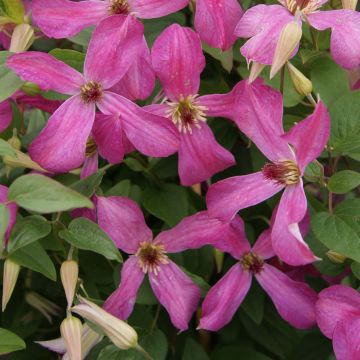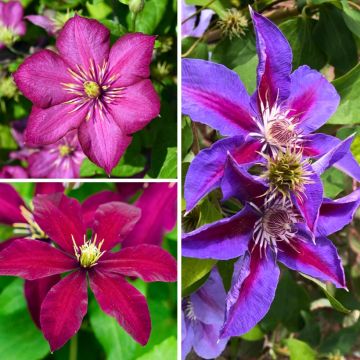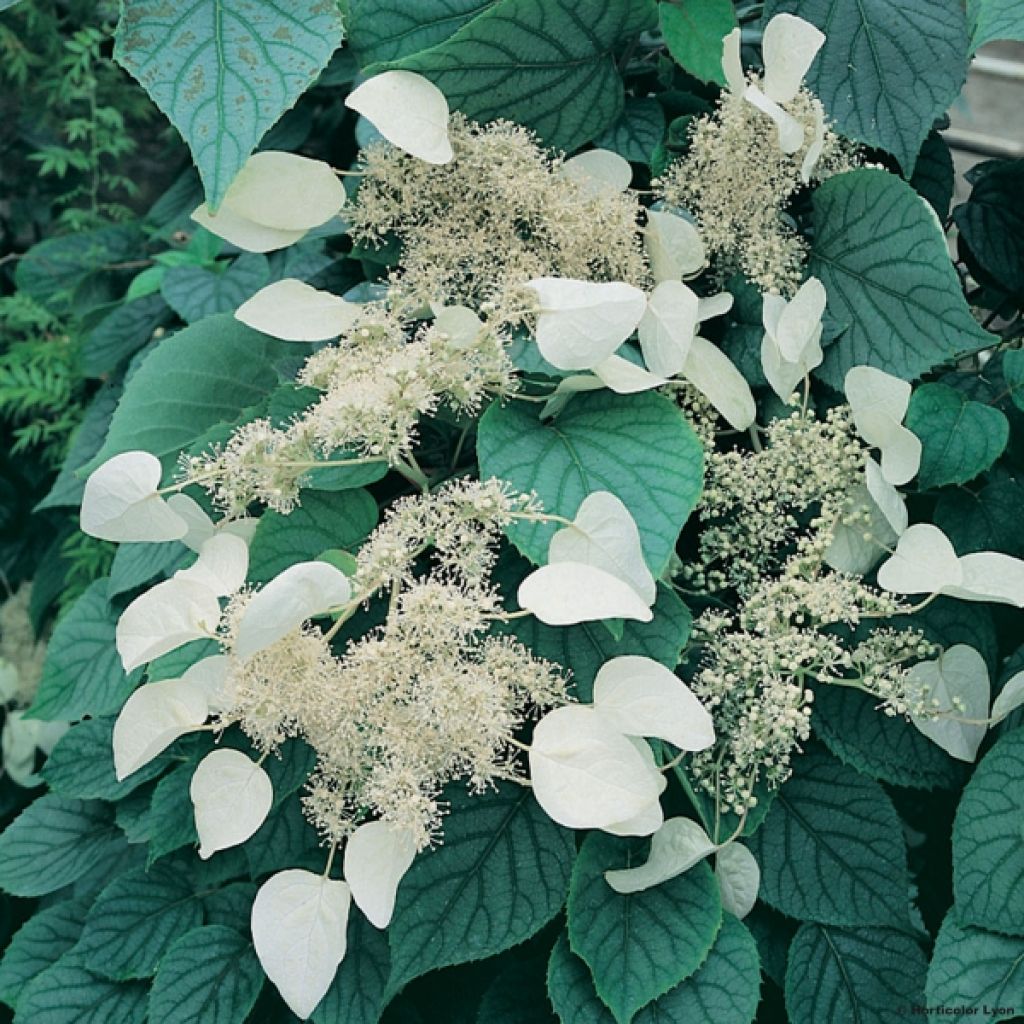

Schizophragma hydrangeoïdes Moonlight
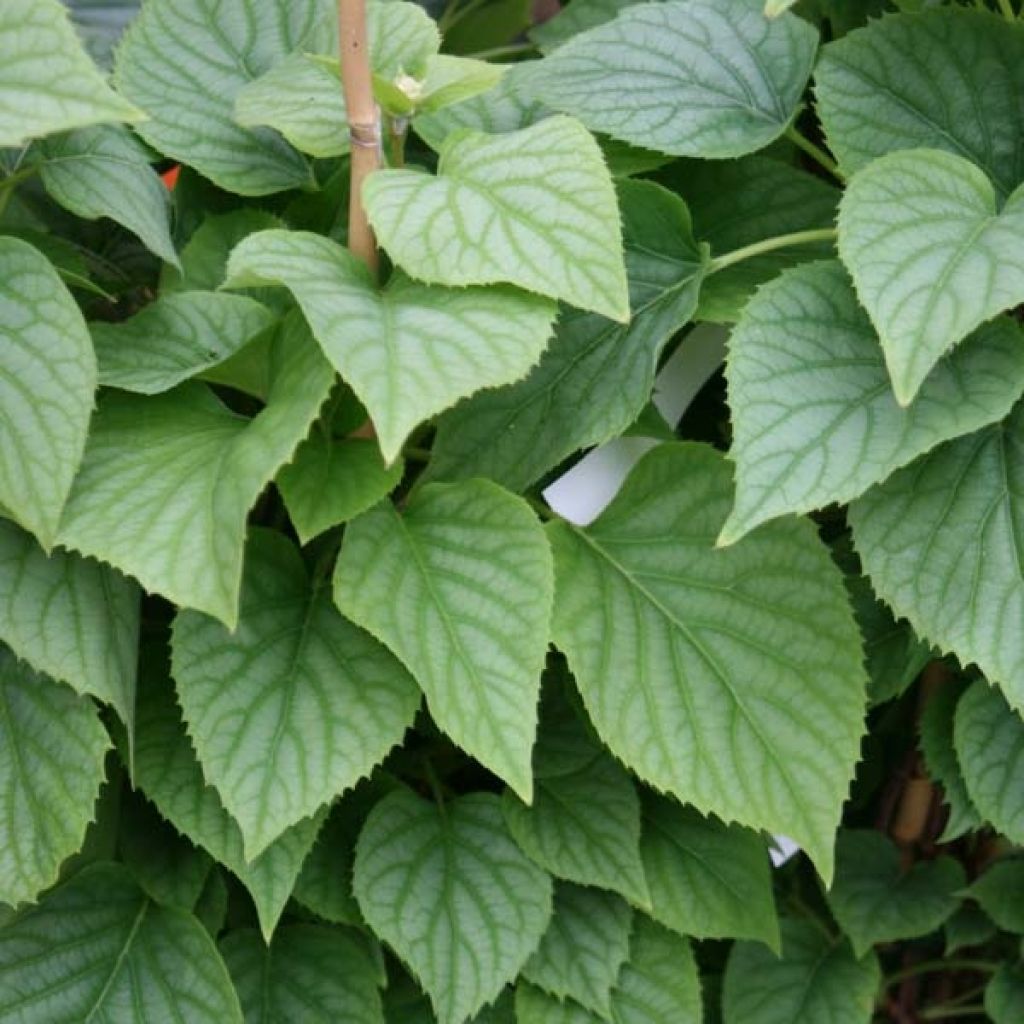

Schizophragma hydrangeoïdes Moonlight
Schizophragma hydrangeoïdes Moonlight
Schizophragma hydrangeoïdes Moonlight
Japanese Hydrangea Vine
Plant received in good condition.
Jean , 21/12/2024
This item cannot be shipped to the selected country
Delivery charge from €5.90
More information
Delivery charge from €5.90
More information
Schedule delivery date,
and select date in basket
This plant carries a 6 months recovery warranty
More information
We guarantee the quality of our plants for a full growing cycle, and will replace at our expense any plant that fails to recover under normal climatic and planting conditions.
From €5.90 for pickup delivery and €6.90 for home delivery
Express home delivery from €8.90.

Does this plant fit my garden?
Set up your Plantfit profile →
Description
Schizophragma hydrangeoides 'Moonlight' is a cultivar of climbing false Hydrangea that differs from the species by its more compact habit and its silver-green foliage that will brighten up dark and neglected places. It is attractive with its summer flowering in creamy-white, with delicate lace-like inflorescences and white bracts of sterile flowers. Equipped with aerial roots, it firmly clings to its support, tree or wall, reaching a height of up to 4m (13ft). It should be grown in shade or partial shade.
Schizophragma hydrangeoides 'Moonlight' belongs to the Hydrangeaceae family. These climbing plants, closely related to climbing Hydrangeas, are native to wooded and humid regions of Asia, China, the Himalayas, Japan, and Korea. This cultivar, smaller than the species, will reach an average height of 4m (13ft) and spread over 2m (7ft 6in). Except for young plants under 3 years old, Schizophragma attaches itself with climbing roots, just like ivy. In June-July, a long flowering period of at least 3 weeks occurs at the terminal part of the stems. The inflorescences are 20cm (7.9in) in diameter, airy, and composed of small clusters of tiny creamy-white fertile flowers, surrounded by sterile flowers with large white bracts that turn pink at the end of flowering. The foliage is deciduous, green with silver reflections, which gives this cultivar its charm. The leaves are large, 10 to 20cm (3.9 - 7.9in) long, opposite, heart-shaped, with finely dentate margins. It is very hardy and can withstand temperatures as low as -20°C (-4 °F).
Schizophragma hydrangeoides 'Moonlight' does not like soils that are too dry, too poor, or limestone. If necessary, add peat to maintain moisture (peat should never completely dry out, or it will be impossible to rehydrate) and lower the pH of your soil. It has a very decorative effect on a north-facing wall or on the trunk of a small mature tree. While it prefers a shaded and protected location, it needs light to flower properly, with morning sun being ideal. This climber can also run along the ground, like ivy, but it will brighten up neglected and dark areas of the garden.
Schizophragma hydrangeoïdes Moonlight in pictures
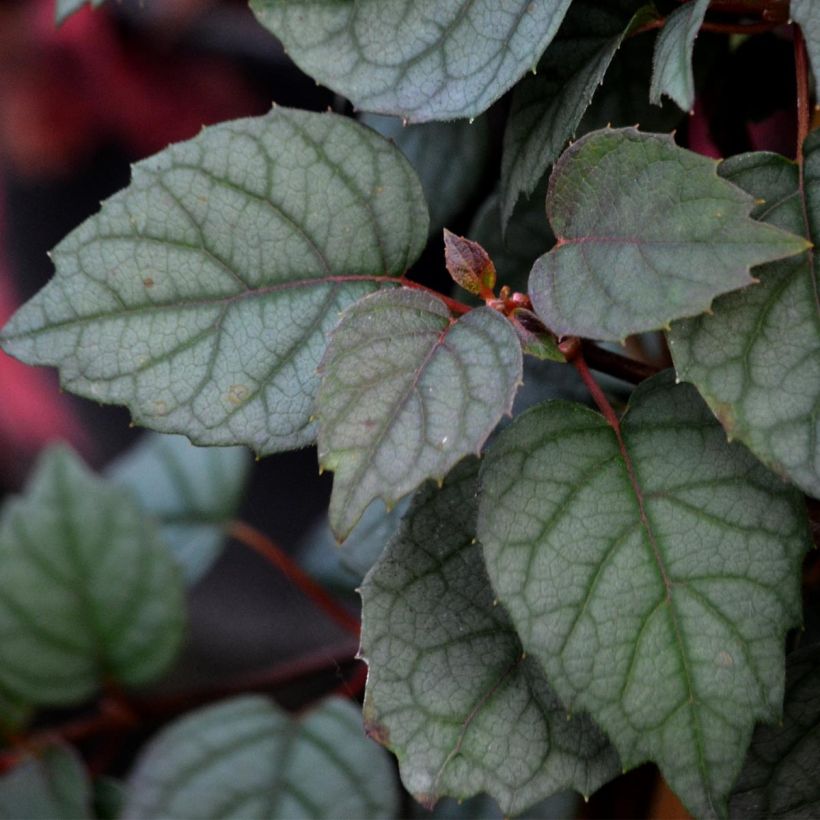

Plant habit
Flowering
Foliage
Botanical data
Schizophragma
hydrangeoïdes
Moonlight
Hydrangeaceae
Japanese Hydrangea Vine
Cultivar or hybrid
Other Schizophragma
Planting and care
Schizophragma 'Moonlight' does not like dry and poor soils, nor limestone. If necessary, add turf to maintain freshness (the turf should never completely dry out, otherwise it will be impossible to rehydrate) and reduce the pH of your too limestone soil. Plant it in autumn or spring. Dig a hole at least 50cm (19.7in) deep, in which you will mix turf and crushed horn with the original soil. A soil rich in humus, clayey, moist but well-drained is ideal. The most suitable exposure is partial shade. However, you can place them in the sun, but shelter the base from direct rays. Avoid excessively hot areas and the setting sun. Regular fertilizer applications will benefit this hungry plant. Similarly, staking is necessary until the aerial roots are well established. Light pruning should be done at the end of winter to remove faded flowers from the previous season, to avoid injuries during severe cold. Optionally, remove unruly or tangled stems in autumn.
Planting period
Intended location
Care
-
, onOrder confirmed
Reply from on Promesse de fleurs
Summer flowering climbers
Haven't found what you were looking for?
Hardiness is the lowest winter temperature a plant can endure without suffering serious damage or even dying. However, hardiness is affected by location (a sheltered area, such as a patio), protection (winter cover) and soil type (hardiness is improved by well-drained soil).

Photo Sharing Terms & Conditions
In order to encourage gardeners to interact and share their experiences, Promesse de fleurs offers various media enabling content to be uploaded onto its Site - in particular via the ‘Photo sharing’ module.
The User agrees to refrain from:
- Posting any content that is illegal, prejudicial, insulting, racist, inciteful to hatred, revisionist, contrary to public decency, that infringes on privacy or on the privacy rights of third parties, in particular the publicity rights of persons and goods, intellectual property rights, or the right to privacy.
- Submitting content on behalf of a third party;
- Impersonate the identity of a third party and/or publish any personal information about a third party;
In general, the User undertakes to refrain from any unethical behaviour.
All Content (in particular text, comments, files, images, photos, videos, creative works, etc.), which may be subject to property or intellectual property rights, image or other private rights, shall remain the property of the User, subject to the limited rights granted by the terms of the licence granted by Promesse de fleurs as stated below. Users are at liberty to publish or not to publish such Content on the Site, notably via the ‘Photo Sharing’ facility, and accept that this Content shall be made public and freely accessible, notably on the Internet.
Users further acknowledge, undertake to have ,and guarantee that they hold all necessary rights and permissions to publish such material on the Site, in particular with regard to the legislation in force pertaining to any privacy, property, intellectual property, image, or contractual rights, or rights of any other nature. By publishing such Content on the Site, Users acknowledge accepting full liability as publishers of the Content within the meaning of the law, and grant Promesse de fleurs, free of charge, an inclusive, worldwide licence for the said Content for the entire duration of its publication, including all reproduction, representation, up/downloading, displaying, performing, transmission, and storage rights.
Users also grant permission for their name to be linked to the Content and accept that this link may not always be made available.
By engaging in posting material, Users consent to their Content becoming automatically accessible on the Internet, in particular on other sites and/or blogs and/or web pages of the Promesse de fleurs site, including in particular social pages and the Promesse de fleurs catalogue.
Users may secure the removal of entrusted content free of charge by issuing a simple request via our contact form.

































